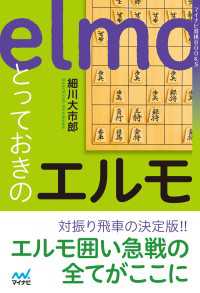- ホーム
- > 洋書
- > ドイツ書
- > Humanities, Arts & Music
- > Music
- > musical equipment
Description
(Text)
Als Unterrichts- und Vortragsstück hat Bertold Hummels 1969 entstandene Sonatine op. 35 viele junge Musizierende auf ihrem Weg begleitet. Tausendfach in alle Welt verkauft, zählt sie zu den bekanntesten Werken des Komponisten und wurde vom Deutschen Musikrat in die Repertoireliste für den Wettbewerb 'Jugend musiziert' aufgenommen. Wärme sowie zündende Rhythmik kennzeichnen die drei Sätze: Im kraftvollen Maestoso wird die Klangfülle des Hauptthemas von einem lyrischen Seitenthema reizvoll kontrastiert; die Reprise endet mit einem impulsiven Fugato. Der zweite Satz Elegie besteht aus einer einzigen gefühlvollen Melodie über sphärischen Harmonien des Klaviers. Als Höhepunkt lösen im Finale vivace spielerische Leichtigkeit, Marschrhythmen und dramatische Steigerungen einander in schneller Folge ab; wilde Arpeggien führen zum Schluss.Original für Violine komponiert, waren außerdem bereits Fassungen für Viola und für Violoncello geläufig. Zum 50. Geburtstag präsentiert Simrock / Boosey& Hawkes das Werk in korrigierter, neu gesetzter Ausgabe. Eine Repertoirebereicherung für beginnende Instrumentalisten stellen die erstmals verfügbaren Fassungen für Alt- und für Tenorsaxophon dar, die der Komponist in den 1990er Jahren selbst verfertigt hat.Schwierigkeitsgrad: 2-3
(Table of content)
Maestoso - Elegie - Finale vivace
(Text)
As an educational and recital piece, Bertold Hummel's Sonatina Op. 35, composed in 1969, has accompanied many a young musician following his or her own path. Having sold a thousand times all over the world, it is one of the composer's best-known works and has been included in the repertoire list for the 'Jugend musiziert' competition by the German Music Council. The three movements are characterized by warmth and exciting rhythms: in the powerful Maestoso, the sonority of the main theme is contrasted with a lyrical side theme; the recapitulation ends with an impulsive Fugato. The second movement Elegie consists of a single soulful melody over spherical harmonies of the piano. As a highlight, playful ease, marching rhythms and dramatic intensifications alternate in quick succession in the Finale vivace, followed by wild arpeggios that conclude the piece.Originally composed for violin, versions for viola and violoncello were already commonly used. To mark its 50th birthday, Simrock/ Boosey & Hawkes present the work in a revised, newly set edition. Written in the 1990s by the composer himself and now available for the first time, the versions for alto and tenor saxophone are valuable additions to the repertoire for beginning instrumentalists.Instrumentation:violin and pianoop. 35a








